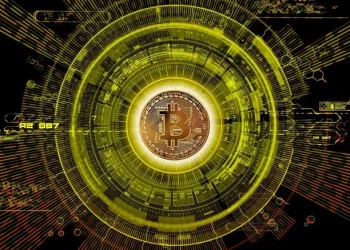In the rapidly evolving world of finance, terms like “digital money” and “digital currency” are often used interchangeably. However, while they may seem synonymous, they represent distinct concepts with important differences. Understanding these differences is crucial for anyone interested in modern financial systems, digital payments, and the future of money. This article aims to clarify the distinctions between digital money and digital currency, exploring their definitions, uses, and implications in today’s economy.
Defining Digital Money
Digital Money refers to money that exists in digital form and can be used for transactions online or electronically. It includes a broad range of financial instruments and systems that facilitate digital transactions. Digital money encompasses various types of money that can be stored and transacted electronically but does not necessarily involve blockchain technology or cryptographic methods.
Examples of Digital Money
Bank Account Balances: The most common form of digital money is the balance in a traditional bank account. This money exists in electronic form and can be accessed through online banking or mobile apps. Despite its digital nature, this money is backed by physical fiat currency and regulated by financial institutions.
Electronic Wallets (E-Wallets): Platforms like PayPal, Apple Pay, and Google Wallet store digital money and allow users to make payments online or via mobile devices. These e-wallets link to users’ bank accounts or credit cards and facilitate seamless digital transactions.
Prepaid Cards: Prepaid debit cards are another form of digital money. These cards are loaded with a specific amount of funds and can be used for online purchases or in-store transactions. They are not directly linked to a bank account but represent stored value that can be accessed electronically.
Understanding Digital Currency
Digital Currency refers to a form of money that is entirely digital and operates independently of traditional financial systems. Unlike digital money, which is typically a representation of fiat currency, digital currency often involves innovative technologies and systems that create and manage its value.
Examples of Digital Currency
Cryptocurrencies: Cryptocurrencies like Bitcoin, Ethereum, and Litecoin are the most well-known examples of digital currencies. These currencies use blockchain technology to maintain a decentralized ledger of transactions. Cryptocurrencies are not backed by any physical asset or government but rely on cryptographic principles to secure transactions and control the creation of new units.
Central Bank Digital Currencies (CBDCs): CBDCs are digital currencies issued by central banks. They represent a digital form of a nation’s fiat currency and are fully regulated by the issuing authority. CBDCs aim to combine the benefits of digital transactions with the stability and trust associated with traditional fiat currencies.
Stablecoins: Stablecoins are digital currencies designed to maintain a stable value by being pegged to a reserve of assets, such as fiat currency or commodities. Examples include Tether (USDT) and USD Coin (USDC). Stablecoins aim to provide the benefits of digital currency while minimizing the volatility often associated with cryptocurrencies.
Key Differences Between Digital Money and Digital Currency
Understanding the key differences between digital money and digital currency can help clarify their roles in the financial ecosystem.
1. Backing and Regulation
Digital Money: Typically backed by fiat currency and regulated by financial institutions and government agencies. It represents a digitized version of traditional money and operates within established financial systems.
Digital Currency: May not be backed by physical assets or traditional financial institutions. Cryptocurrencies operate on decentralized networks without central authority, while CBDCs are regulated by central banks but are still distinct from traditional money.
2. Technology and Infrastructure
Digital Money: Often relies on existing financial infrastructure, such as bank networks and payment systems. It may use technologies like online banking platforms or mobile payment apps but does not necessarily involve blockchain or cryptographic methods.
Digital Currency: Frequently involves advanced technologies such as blockchain, cryptographic algorithms, and decentralized networks. These technologies enable the creation, management, and security of digital currencies.
3. Transaction Process
Digital Money: Transactions are processed through traditional financial systems. For example, transferring digital money from one bank account to another involves the banking system’s infrastructure.
Digital Currency: Transactions are often recorded on a blockchain or distributed ledger. In the case of cryptocurrencies, transactions are verified by a network of nodes through consensus mechanisms, such as proof of work or proof of stake.
4. Value Stability
Digital Money: Generally maintains a stable value since it is backed by fiat currency and regulated by financial institutions. Its value is relatively consistent with physical money.
Digital Currency: Value can vary significantly, especially for cryptocurrencies. Cryptocurrencies are known for their price volatility, while stablecoins are designed to minimize volatility by being pegged to a stable asset.
5. Usage and Acceptance
Digital Money: Widely accepted and used for everyday transactions, including online purchases, bill payments, and in-store payments. It integrates seamlessly with existing financial systems and services.
Digital Currency: Adoption varies depending on the type of digital currency. Cryptocurrencies are increasingly accepted by merchants and investors but are not yet universally accepted. CBDCs and stablecoins aim to enhance digital transactions and may become more widely adopted in the future.
The Role of Digital Money and Digital Currency in the Economy
Both digital money and digital currency play significant roles in the modern economy, each contributing to the evolution of financial systems and payment methods.
1. Digital Money’s Impact
Convenience and Efficiency: Digital money offers convenience and efficiency by enabling quick and easy transactions without the need for physical cash. It facilitates online shopping, electronic transfers, and automated payments.
Financial Inclusion: Digital money can enhance financial inclusion by providing access to banking services for individuals who may not have traditional bank accounts. E-wallets and prepaid cards offer alternative ways to participate in the financial system.
Innovation in Payments: The rise of digital money has spurred innovation in payment methods and financial technologies. Mobile payment apps, peer-to-peer transfer services, and digital banking platforms have transformed how people manage and spend their money.
2. Digital Currency’s Impact
Decentralization and Security: Digital currencies, especially cryptocurrencies, offer decentralization and enhanced security through blockchain technology. They provide an alternative to traditional financial systems and enable peer-to-peer transactions without intermediaries.
Monetary Policy and Financial Stability: CBDCs represent a significant development in monetary policy and financial stability. By providing a digital form of fiat currency, central banks can better manage money supply and improve the efficiency of payment systems.
Investment Opportunities: Cryptocurrencies have created new investment opportunities and asset classes. Investors and traders can participate in a growing market of digital assets, contributing to the development of financial markets and technology.
Future Trends and Considerations
The future of digital money and digital currency is likely to involve further advancements and changes in the financial landscape.
1. Integration and Convergence
As technology continues to evolve, the lines between digital money and digital currency may blur. For example, the integration of blockchain technology into traditional financial systems could lead to new forms of digital money that combine elements of both categories.
2. Regulation and Governance
The regulatory environment for digital currencies is evolving. Governments and financial institutions are working to develop frameworks for managing digital assets, addressing issues such as security, privacy, and financial stability.
3. Adoption and Acceptance
The adoption and acceptance of digital money and digital currency will likely increase as more people and businesses recognize their benefits. Continued innovation and improvements in technology will drive the growth of digital financial systems.
See also: What Does the Digital Dollar Mean?
Conclusion
While digital money and digital currency are often used interchangeably, they represent distinct concepts with unique characteristics and roles in the financial ecosystem. Digital money refers to electronically stored and transacted value that is typically backed by traditional fiat currency and regulated by financial institutions. In contrast, digital currency encompasses a broader range of assets, including cryptocurrencies and central bank digital currencies, which operate using advanced technologies and may not be directly tied to physical assets.
Understanding the differences between digital money and digital currency is essential for navigating the modern financial landscape and preparing for the future of digital transactions. Both forms of digital finance offer significant benefits and opportunities, shaping the way we manage, spend, and invest our money.
Related topics:
Is Digital Currency a Good Investment?

















